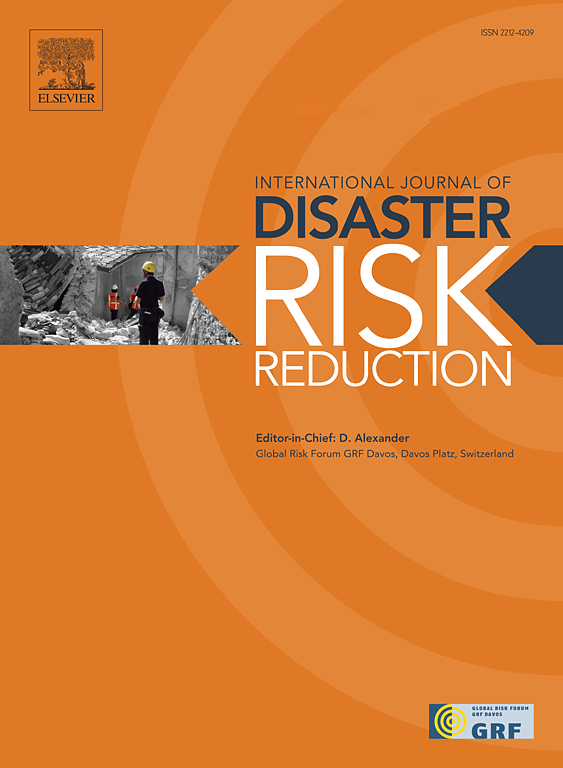原油炼油厂试验台地震风险评估:可选脆弱性方法
IF 4.2
1区 地球科学
Q1 GEOSCIENCES, MULTIDISCIPLINARY
International journal of disaster risk reduction
Pub Date : 2025-04-16
DOI:10.1016/j.ijdrr.2025.105495
引用次数: 0
摘要
以原油炼油厂为基准,检验资产组合地震风险评估中的一个基本假设,即脆弱性函数可以在保真度损失可以忽略不计的情况下表征资产(或其类别)。虽然这通常被认为是理所当然的,但它也意味着,人们不应该关心在受到相同地面运动的类似资产之间应该存在的响应的相关性。毕竟,这是将多个结构分析结果总结为单一易损性曲线的直接结果,而该曲线仅由(通常为标量)强度度量参数化。另一种方法是单独考虑单独的地面运动记录,只在影响指标的最终水平上汇总每个记录的结果。与传统方法相比,炼油厂提供了一个理想的测试平台,可以相互连接资产和多种炼油工艺。结果强调,无论系统中断涉及到多个相似或相同的资产,打破它们的记录到记录的响应相关性会严重影响评估结果。本文章由计算机程序翻译,如有差异,请以英文原文为准。
Seismic risk assessment of a crude oil refinery testbed: Alternative fragility approaches
A crude oil refinery is employed as a benchmark to test a fundamental assumption in the seismic risk assessment of asset portfolios, i.e., that a fragility function can characterize an asset (or class thereof) with negligible loss of fidelity. Although this is often taken as granted, it also implies that one should not care about breaking the correlation in response that should exist between similar assets subjected to the same ground motion. After all, this is a direct consequence of the summarization of multiple structural analysis results into a single fragility curve that is only parameterized by the (typically scalar) intensity measure. The alternative is to separately consider individual ground motion records and only aggregate per-record results at the final level of impact metrics. Stacking the deck against the conventional approach, a refinery offers an ideal testbed of interconnected assets and multiple refining processes. The results highlight that wherever multiple similar or identical assets are involved in a system disruption, breaking their record-to-record response correlation can severely bias the assessment results.
求助全文
通过发布文献求助,成功后即可免费获取论文全文。
去求助
来源期刊

International journal of disaster risk reduction
GEOSCIENCES, MULTIDISCIPLINARYMETEOROLOGY-METEOROLOGY & ATMOSPHERIC SCIENCES
CiteScore
8.70
自引率
18.00%
发文量
688
审稿时长
79 days
期刊介绍:
The International Journal of Disaster Risk Reduction (IJDRR) is the journal for researchers, policymakers and practitioners across diverse disciplines: earth sciences and their implications; environmental sciences; engineering; urban studies; geography; and the social sciences. IJDRR publishes fundamental and applied research, critical reviews, policy papers and case studies with a particular focus on multi-disciplinary research that aims to reduce the impact of natural, technological, social and intentional disasters. IJDRR stimulates exchange of ideas and knowledge transfer on disaster research, mitigation, adaptation, prevention and risk reduction at all geographical scales: local, national and international.
Key topics:-
-multifaceted disaster and cascading disasters
-the development of disaster risk reduction strategies and techniques
-discussion and development of effective warning and educational systems for risk management at all levels
-disasters associated with climate change
-vulnerability analysis and vulnerability trends
-emerging risks
-resilience against disasters.
The journal particularly encourages papers that approach risk from a multi-disciplinary perspective.
 求助内容:
求助内容: 应助结果提醒方式:
应助结果提醒方式:


